Reimagining Singapore: Placemaking through Arts and Culture
ETHOS Issue 19, Jul 2018
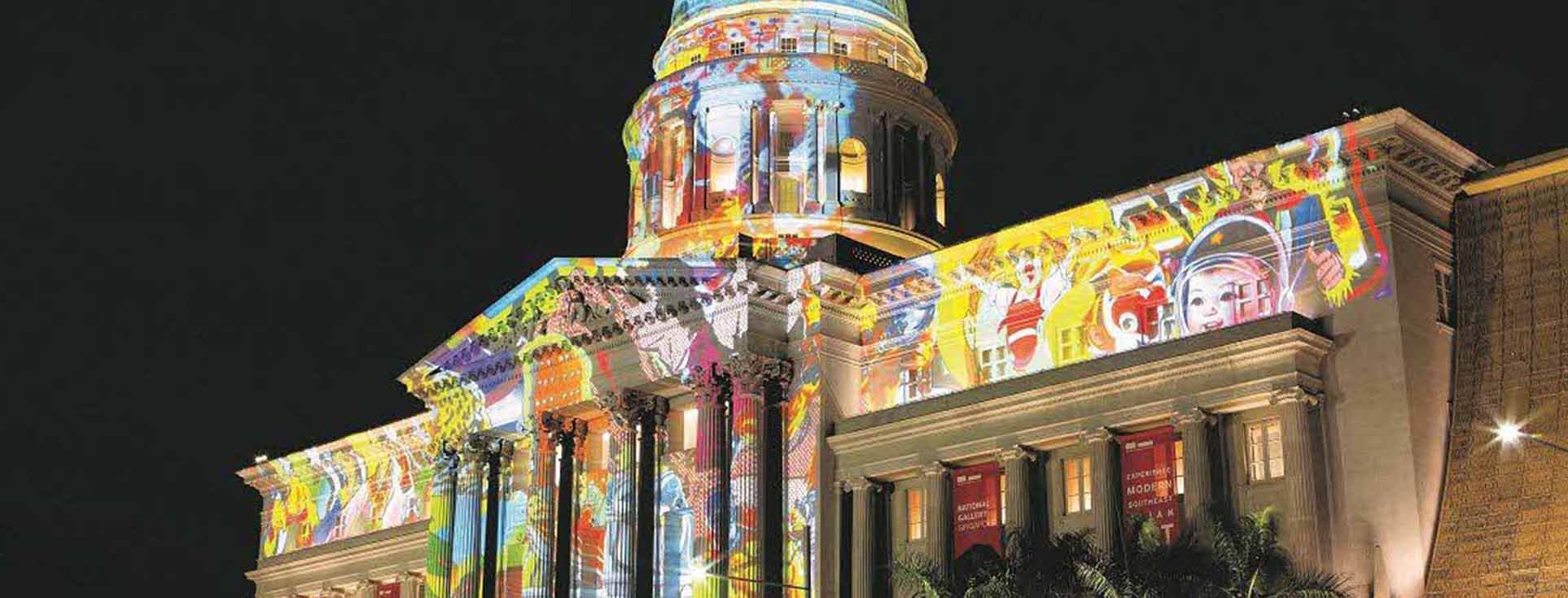
Urban governance is a key facet of Singapore’s success as a city-state. Our policies have sought to balance the functional needs of society, as a place to live, work and play. With greater cultural diversity and the growing complexities of globalisation, there is a greater need than ever before to create physical spaces which can provide contexts for positive interactions, and serve as anchors of identity and community bonds.
With greater cultural diversity and globalisation, there is a need to provide contexts for positive interactions.
Beyond good physical design, spaces connect with individuals and communities emotionally when they facilitate shared experiences and evoke memories of a common heritage. Good placemaking encompasses three key components: places, programming and partnership. Places and spaces help to enshrine the physicality of our heritage. Through active programming, we communicate a sense of history and identity to both residents and visitors. Strategic partnerships enable these programmes to bring diverse social groups together in shared experiences, allowing them to celebrate differences, while fostering rootedness in our collective values and Singaporean identity.
In the past five years, Singapore has sought to enhance placemaking through arts and culture. Our efforts to shape and enliven the places we inhabit through cultural programming and partnerships convey our shared histories and traditions, and showcase our distinctiveness and identity to the rest of the world.
Places: Iconic Cities with Distinctive Characters
Many countries around the world recognise the economic and social benefits of arts and culture for their communities. They have revitalised their spaces and communities through the arts and through placemaking. As cultural vibrancy advances, so has tourism and economic growth. Paris, with its many famous museums and galleries, holds a special place in the world’s imagination. Similarly, Melbourne—named the most liveable city six years in a row by The Economist—regards culture as extending beyond the arts to all sectors, including science, research and education. Creativity and collaboration, promoted across industries and organisations, make Melbourne and Paris attractive global cities in which to work, live and play.
Like Singapore, Seoul’s transformation into a booming export economy has made it a model city for other countries to emulate. In the process, Korean pop culture has become a global phenomenon.
But even as Seoul expands its cultural reach internationally, it has also sought to retain its history and traditions. Seoul’s Dongdaemun Design Plaza, for instance, was intended to be a centre for fashion and design—but when remains of Seoul’s ancient wall was discovered at the construction site, it was turned into a memorial park instead. By preserving the structural integrity of its history, Seoul has provided a cultural anchor for its people amidst the rapid change brought about by globalisation.
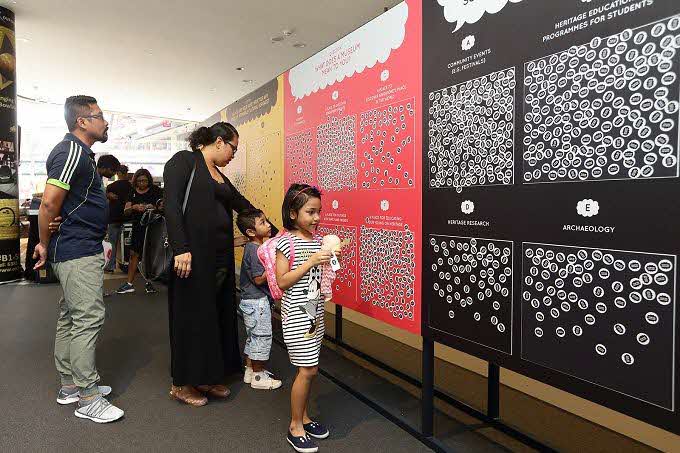
SG Heritage Plan Travelling Exhibition
Source: MCCY
Placemaking in Singapore
Like other global cities, Singapore’s multicultural identity and rich history can be reflected in our spaces and places. Our monuments and historic buildings embody the stories of our past and the journey taken by pioneering generations who came before us. In April this year, Grace Fu, Minister for Culture, Community and Youth, launched Our SG Heritage Plan, the first masterplan for Singapore’s heritage and museum sector. The Plan makes recommendations for protecting and promoting Singapore’s tangible heritage, by accounting for heritage considerations up front in development plans, and developing new ways of commemorating our historic buildings, sites and structures. The Plan seeks to ensure that our tangible heritage continues to resonate with our people, both as historical markers and as living everyday spaces.

The Civic and Cultural District Master Plan (1988)
Source: Courtesy of the Urban Redevelopment Authority
Masterplanning for Places
Placemaking integrates urban planning, cultural policy and community engagement to collectively shape the distinct characteristics of our urban districts, contributing to a successful and culturally vibrant city.
Singapore’s inaugural Conservation Master Plan in 1986 revitalised the 105-hectare Civic District. Making the most of the area’s wealth of physical assets, including unique European neoclassical buildings, issues such as inaccessible landmarks, disjointed routes and weak landscaping were addressed through improved urban design. Planners studied historical areas in other cities such as Embankment along the River Thames in London and engaged the public for views.
Today, the Civic District is livelier than ever, integrating arts and cultural sites such as the Victoria Theatre and Victoria Concert Hall, and the Esplanade with new infrastructure to reduce traffic congestion and ease pedestrian flow.
Subsequent masterplans have expanded the reach of culture beyond the Central Area, by locating cultural facilities, such as housing for artists and arts groups, in regional and town centres to make them more accessible. A nationwide stocktaking of existing arts and cultural spaces was carried out, to help agencies formulate a plan for sites to safeguard cultural facilities and identify neighbourhoods the arts might revitalise. The National Arts Council (NAC) and the Urban Redevelopment Authority (URA) have also worked closely to link arts housing with conservation planning, adapting pre-war bungalows and disused shophouses into art studios. The National Heritage Board (NHB) was involved in the development and management of these conserved buildings. Examples of these sites include historic buildings at Selegie Road and Waterloo Street, which are now occupied by arts organisations such as the Chinese Calligraphy Society of Singapore, Dance Ensemble Singapore, The Theatre Practice and Objectifs. These Arts Belts create opportunities for genuine exchange and sustained interaction between the arts practitioners who are tenants, as well as with residents and businesses in the area, contributing to a more culturally vibrant neighbourhood.
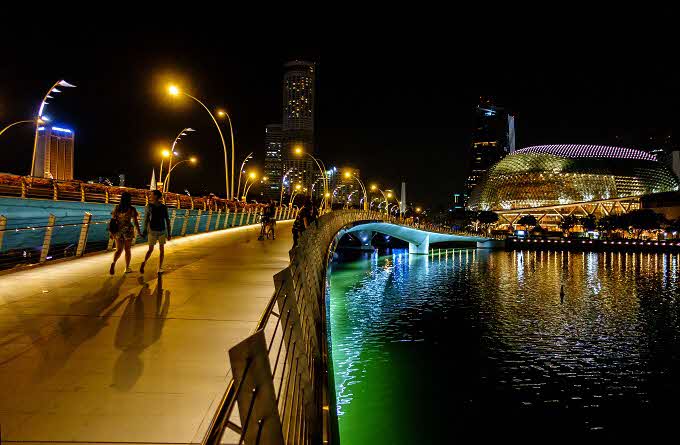
Esplanade—Theatres on the Bay
Source: Civil Service College
Building upon Singapore’s aspiration to become a global cultural centre, we have invested in the rejuvenation of national buildings and historic spaces. Today, many of these have been repurposed as iconic theatres, museums and galleries: the outcome of a deliberate decision to preserve and bring new relevance to these buildings beyond their architectural and historical significance.
Placemaking through arts and culture, however, has to be balanced against our land needs as a society. The case of the Old School at Mount Sophia—a multidisciplinary arts and creative hub housed at the former premises of the Methodist Girls’ School—illustrates this challenge. When the time came for the Old School to move out so the land could be redeveloped, there was pushback from tenants and the public. This was testament to the Old School’s success at authentic placemaking, bringing the community together to rejuvenate shared spaces through arts and culture. In the end, a tradeoff was made: the land was tendered for residential purposes but on condition that three heritage buildings would be conserved, restored and integrated into the new development.
While efforts have been made to adapt historical buildings and expand existing facilities, there has also been a strong push to construct new, specialised infrastructure for arts and culture. Perhaps Singapore’s most ambitious project in this direction is the Esplanade. Since its opening in 2002, the Esplanade has hosted and nurtured some of the best performing arts productions from Singapore and abroad, attracting millions of visitors. The introduction of arts housing within community centres has also brought the arts closer to the heartlands while optimising land use: for example, Marine Parade Community Building was upgraded in 2000 to host a professional theatre company, The Necessary Stage. Together, these projects embody Singapore’s urban design guidelines by promoting accessibility and mixing historic and modern developments, rooting culture as an essential component in the economy and a contributor to society’s well-being.
Historic Treasures Repurposed
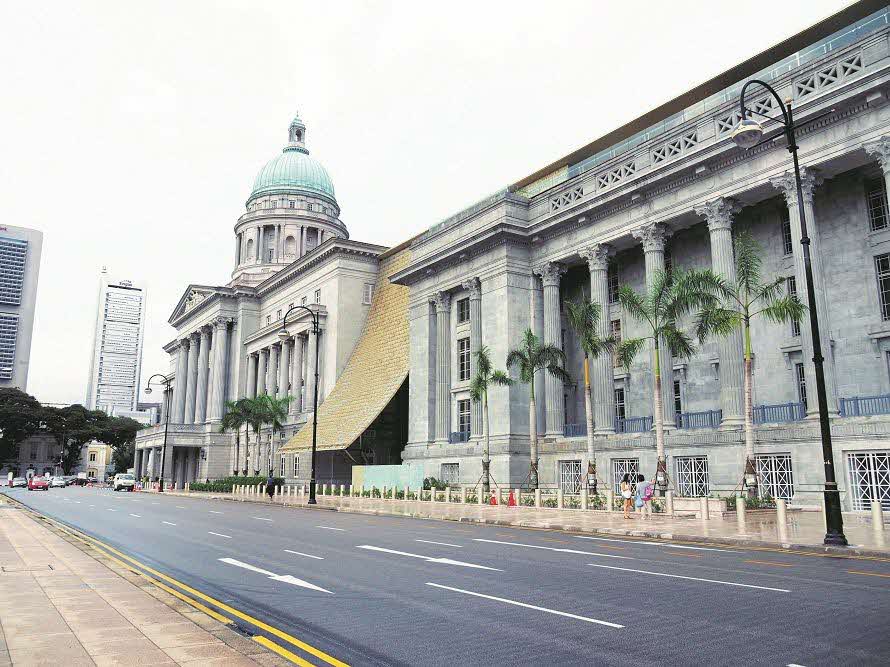
Source: National Gallery Singapore
Originally built to house the Municipal Council, the National Gallery Singapore in the Civic District also served as the former headquarters of Syonan Municipal Administration and Syonan Supreme Court during the Japanese Occupation in 1942, and bore witness to the Japanese surrender to Lord Mountbatten in 1945. Renamed the City Hall building in 1951, it was where then Prime Minister Lee Kuan Yew and his Cabinet took their Oaths of Allegiance in 1959. Today, it is furnished with modern architectural elements and houses the largest public collection of modern art from Singapore and Southeast Asia.
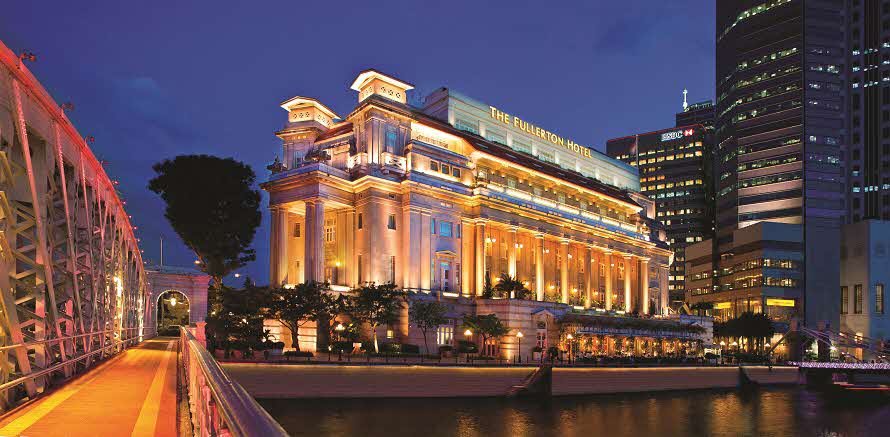
Source: Fullerton Hotel
Built in 1928 as the former General Postal Office, the Fullerton Building once played an important role in Singapore’s communication with the rest of the world, and also served as a makeshift hospital during the Second World War. After the war, it was used as government offices for the Ministry of Finance, Inland Revenue Department, Economic Development Board and Monetary Authority of Singapore. Today, it has become part of the luxurious Fullerton Hotel.
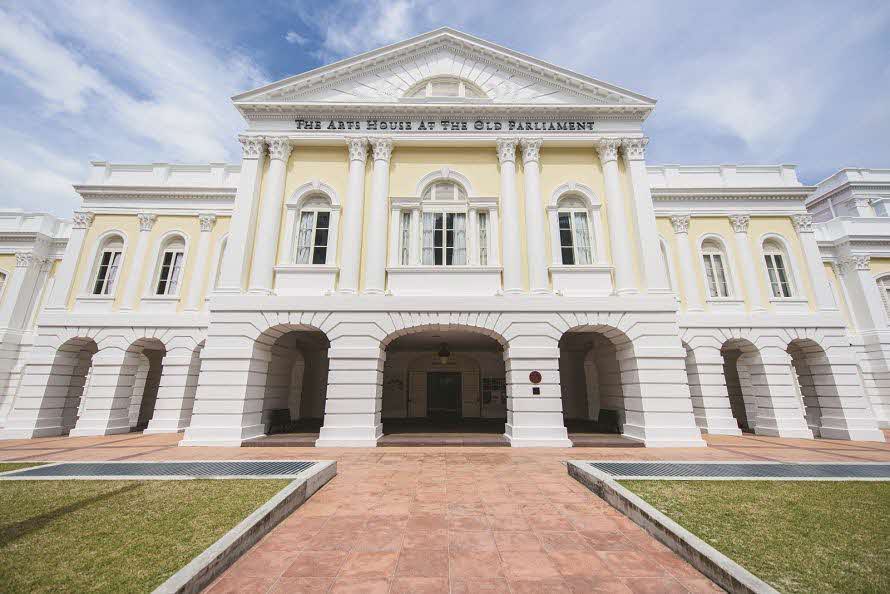
Source: Arts House Limited
The Arts House was Singapore’s first Parliament House and served as the offices for internal self-governance under Chief Minister David Marshall in 1955. Today, The Arts House is home to the Singapore International Festival of Arts and a centre for literary arts programmes.
Programming: Rejuvenating Our “Hardware” through Cultural “Heartware”

The Aliwal Urban Art Festival @ Kampong Glam featured murals by home-grown artists that reference the area’s heritage.
Source: Arts House Limited
Arts and culture programming contribute towards urban rejuvenation, connecting Singaporeans to our spaces, our history, and our shared future. Good programming fosters shared experiences: in a diverse, multicultural city, it can enhance understanding between communities.
For this to have broader impact, programming has to be accessible. The Esplanade, for example, provides year-round performances in the realms of music, dance, theatre and visual arts. Seven in ten shows are free, allowing everyone to enjoy the arts. Its cultural festivals such as Huayi, Pesta Raya and Kalaa Utsavam are timed to coincide with key cultural celebrations—including Chinese New Year, Hari Raya Puasa at the end of the Muslim holy month of Ramadan, and the Hindu “Festival of Lights”, Deepavali. These events showcase Singapore’s unique historical roots, and ties to the rest of Asia.
In the Kampong Glam neighbourhood, the royal residence of Singapore’s former Malay Sultans in Singapore now houses the Malay Heritage Centre (MHC), showcasing Singapore’s Malay heritage and culture and its links to the region. Fitted with wooden friezes from Malay kampong houses and Chinese green-tiled roof-covered walkways, the multi-ethnic façades of Kampong Glam’s shophouses embody the area’s traditional trades, cultures and practices, passed down from generation to generation. Heritage trails guide tourists around the area, regaling them with stories of its past residents and traders. The MHC, together with the nearby Aliwal Arts Centre and neighbourhood association One Kampong Glam, have also organised festivals and events to highlight the district’s distinct traditional arts and crafts, integrated with modern performances and youthful energy. Murals from home-grown artists depicting the heritage of the area are also featured along the district’s walls. Such placemaking initiatives have brought an increased 40% in footfall to the area over the past three years, reinvigorating historic Kampong Glam with new purpose in the 21st century.1

Students viewing a public art show curated by the art collective Vertical Submarine. Works of public art were on display in Jurong as part of the Arts in Your Neighbourhood initiative to bring engaging arts experiences into neighbourhoods in Singapore.
Source: MCCY
Partnership: Working with the Community
Placemaking can only be successful and sustainable by working closely with stakeholders, which can range from community groups to cultural institutions and agency partners. Placemaking invites people to collectively reimagine and reinvent public spaces at the heart of every community. Indeed, there has been a growing interest among Singaporeans to participate in arts and cultural programmes within their own neighbourhoods. Initiatives such as PAssionArts,2 Arts in Your Neighbourhood,3 as well as public art and heritage trails offer a variety of experiences to citizens, allowing them to connect more closely with the places they inhabit. Common quotidian spaces such as shopping malls, hawker centres, the void decks of HDB flats and community clubs are transformed into stages and exhibition spaces for community artists and interest groups to share their talents and stories with friends and neighbours.
Today, there are nearly 20 heritage trails all around the island, which Singaporeans can experience by themselves or with volunteer guides. Through community partnerships, NAC has also developed a network of 16 arts and culture nodes islandwide that offer residents quality arts experiences all year round, strengthening place identity. For instance, Our Gallery at Taman Jurong fosters appreciation in the visual arts through artist-led community participation projects. A total of 15 artworks, co-created by artists and residents, have been installed in various parts of Taman Jurong town since the node’s inception in 2014. These co-creations help to enhance the environment and instil a strong sense of community and belonging. With these initiatives, everyone—young or old, amateur or professional—can participate and be inspired by arts and culture.

Locations of arts spaces, community nodes and presentation venues within Singapore
Source: MCCY
At the grassroots level, placemaking promotes collaboration amongst communities to shape the neighbourhoods they live in. For instance, OH! Open House, a non-profit organisation founded in 2009, places art in everyday spaces such as HDB flats, as an alternative way to experience art outside of museums and galleries while highlighting some of Singapore’s most distinctive neighbourhoods. OH! also collaborates with local artists to experiment with site-specific pieces, giving new meaning to everyday spaces. In this way, OH! challenges audiences to think more deeply about the immediate environment they inhabit, as well as the wider Singaporean context. This method of placemaking capitalises on the character and potential of a local community’s assets, creating greater awareness of public spaces and fostering a sense of belonging to the community.
The public has also been encouraged to participate in shaping the spaces they use and live in. The Public Art Trust (PAT) scheme, introduced in 2015, provides tax incentives and dollar-for-dollar matching for private donors and corporations towards the commissioning of public art. To celebrate SG50 (Singapore’s Golden Jubilee), three public artworks were commissioned in the Civic District, including 24 Hours in Singapore by Baet Yeok Kuan—an interactive installation featuring familiar everyday sounds from around the city—prominently located on the Front Lawn of the Asian Civilisations Museum. The PAT has also initiated an online repository to feature and document public artworks in Singapore, and has offered Singaporeans numerous ways to experience public art through curated art trails. By enabling artists to contribute installations to public spaces, and bringing art closer to Singaporeans, PAT has led to increased arts accessibility and the creation of quality artworks in our public spaces that beautify and inspire.

24 Hours in Singapore by Baet Yeok Kuan
Source: MCCY
Conclusion
For Singapore to be a true global city, economic and financial success must go hand in hand with a vibrant cultural scene. Our cultural institutions work with economic agencies such as the Economic Development Board and Singapore Tourism Board to profile Singapore’s cultural offerings to the world.
Such efforts are bearing fruit. In a 2015 quantified study of the economic and social contribution of cultural and creative industries around the world by UNESCO and Ernst and Young, Singapore was ranked the fifth best city for attracting global creative talent, ahead of Tokyo and Berlin. Singapore is also a UNESCO Creative City of Design and the ninth most creative country in the world, according to the 2015 Martin Prosperity Institute Global Creativity Index. Singapore is slowly but surely maturing into a more confident and cosmopolitan city, and there is much we can take pride in.
Limited land, space and funding will continue to pose challenges in Singapore, particularly in light of competing sectoral priorities, as well as perennial tradeoffs such as between preservation and development. Nevertheless, placemaking strategies have enabled Singapore to strike an effective balance, integrating urban planning, cultural policy and community engagement to create a more distinctive and liveable city.
Good programming makes arts and culture accessible to all as part of daily life, and helps bring diverse social groups together in common spaces. This in turn, helps create contexts for positive interactions and shared experiences, emotionally anchoring Singaporeans to places, spaces and community.
Successful placemaking that brings out the distinctive characters of each precinct is only possible through partnerships that make the most of the distinctive local character of each place and its people, with ground-up efforts that resonate with the larger community.
Ultimately, the measure of success of our placemaking efforts will be determined less by its physical expression than by the quality and relationships of the communities that come together in the process, and whose value go beyond economic and financial measures. While placemaking can make for a more vibrant, attractive destination for visitors, it is also a way to create a more endearing home for Singaporeans—one we imagine and create together.
NOTES
- Katyana Melic, “Kampong Glam: When Old is Also Hip”, Centre for Liveable Cities, January 2018, accessed 25 May 2018, https://www.clc.gov.sg/docs/default-source/urban-solutions/urb-sol-iss-12-pdfs/case_study-sg-kampong-glam
- Established by the People’s Association with the support of the Ministry of Culture, Community and Youth, PAssionArts was developed to provide a collective identity to community arts in Singapore. It aims to make arts and culture more accessible to the people by bringing it right to the heart of every constituency in Singapore.
- The Arts in Your Neighbourhood programme, an initiative by the National Arts Council, aims to bring engaging arts experiences to different neighbourhoods in Singapore. The programme comprises a suite of quality arts programmes, performed and facilitated by established artists and arts groups at various locations across the island.

